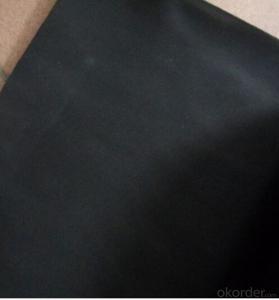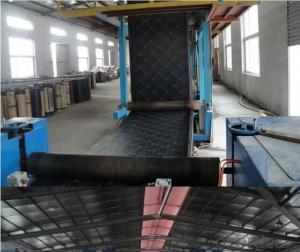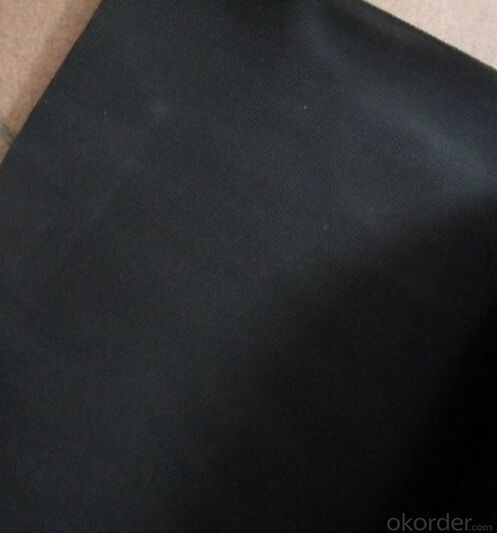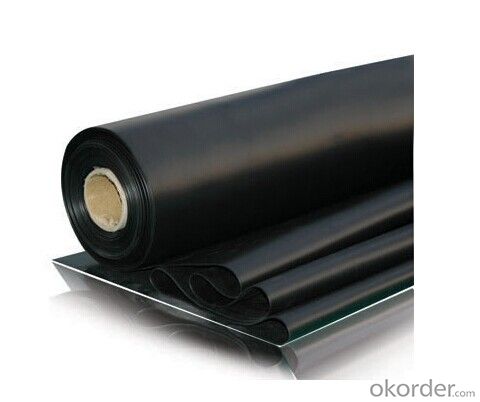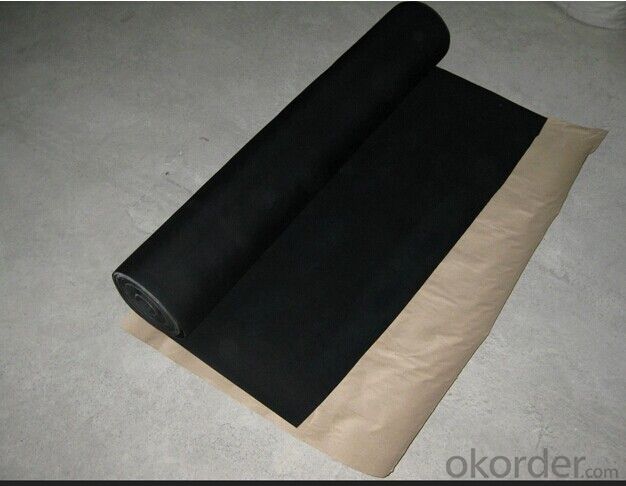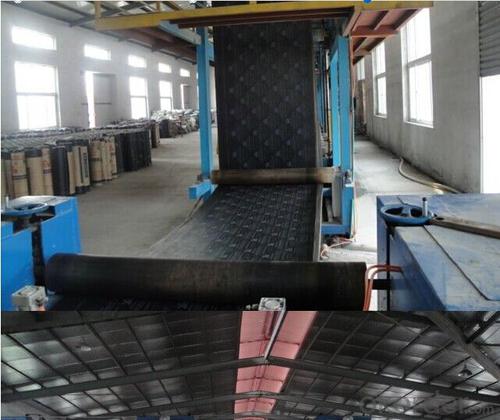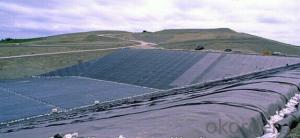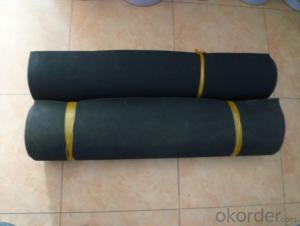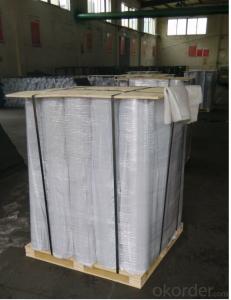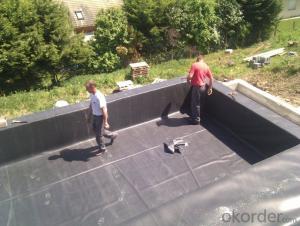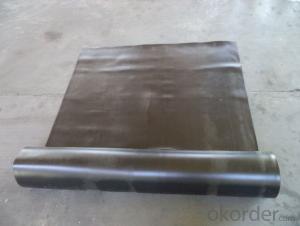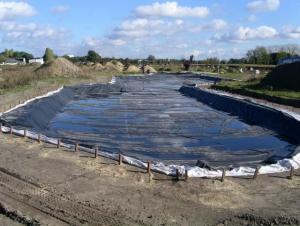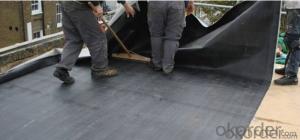EPDM Pond Linder Waterproof Membrane for Garden System
- Loading Port:
- Qingdao
- Payment Terms:
- TT OR LC
- Min Order Qty:
- 2000 m²
- Supply Capability:
- 100000 m²/month
OKorder Service Pledge
OKorder Financial Service
You Might Also Like
EPDM waterproofing Rubber membrane
1. Introduction of EPDM Waterproofing Membrane:
This waterproof coiled material is of high elasticity with best performance among high polymer waterproof coiled material in the world.It is also the most typical one in the world.Waterproof coiled material made of ternary ethylene-propylene rubber of ‘CHEN SHENG’ brand is produced with the use of the most advanced continuous extrusion and vulcanization technology and related equipments which are specially designed for production of such product.It is good in compactness,without bubble and performance difference in length and breadth,performances reach or exceed the demands of GB18173.1-2012 standard.
2. Detail Specification of EPDM Waterproofing Membrane:
Type | EPDM Waterproof Membrane | ||
Material | EPDM Rubber | ||
Thickness | 1.2mm | 1.5mm | 2.0mm |
Weight(kg/m2) | 1.54-1.58 | 1.79-1.83 | 2.25-2.29 |
Size | 1.2m(width) * 20m(length)/roll | ||
Type | Vulcanized & Weldable | ||
Pattern | Non-reinforced(homogeneous) | ||
Packing | 24sqm/roll, with plastic bag | ||
Color | Black | ||
Application | Roof, basement, pond, Lake, steel structure roof, swimming pool, underground, tunnel, etc | ||
3. Features of EPDM Waterproofing Membrane:
1>Excellent anti-aging performance, service life up to 50 years
2>Working well with in -40-100 degree, it can be constructed with a single layer in ambient temperature.
3>Waterproofing on various kinds of underground project,industrial of civil buildings and structures. 4>high extension rate, high tensile strength, small size changes at heat treatment
5>Good plant roots penetrability resistance and can be made waterproofing layer of planting roof 6>Special modified molecular structure ,effectively resolving the current domestic and foreign glue joint problem . 7>Good low temperature flexibility, and good performance of adapting to ambient temperature changes. 8>Convenient application ,solid joint, no environment pollution
9>chemical corrosion Resistance, can be used for special occasions
4. Technical Data of EPDM Waterproofing Membrane:
ITEM | STANDARO REQUEST | |
Tensile strength at breaking,normal temperature,Mpa | ≥7.5 | |
Elongation at breaking, % | ≥450 | |
Tearing strength,KN/m | ≥25 | |
Bending at low temperature | ≤-40°C | |
Water impermeability,0.1Mpa×30min | Impermeability | |
Hot air aging 80°C×168h | Unchanging of tensile strength at breaking,% | ≥80 |
Unchanging of elongation at breaking,% | ≥70 | |
Appearance of 100% elongation | No crack | |
Property of anti alkali 10% Ca(OH)2×168h normal temperature | ≥80 | |
≥80 | ||
4. Some photos:
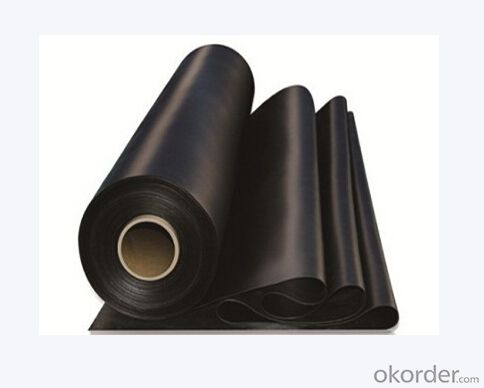
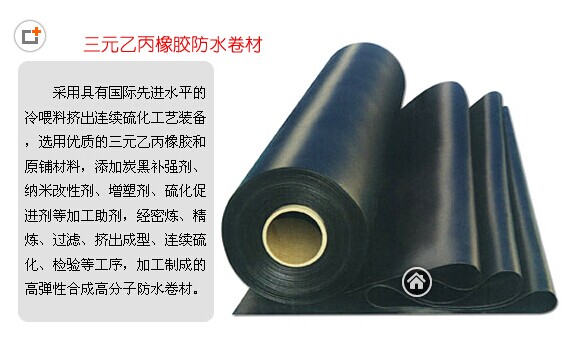
- Q: Can a waterproofing membrane be used for underground utilities?
- Underground utilities can benefit from the use of a waterproofing membrane. These membranes are specifically designed to act as a barrier against water penetration, safeguarding the underlying structure from moisture damage. This becomes particularly significant for underground utilities, which face constant exposure to the surrounding soil and potential water seepage. Applying a waterproofing membrane to underground utilities, such as water pipes, sewer lines, or electrical conduits, aids in preventing water infiltration and subsequent corrosion or degradation of the materials. Acting as a protective layer, the membrane ensures that the utilities remain dry and free from moisture-related issues. Different types of waterproofing membranes are available, including sheet membranes, liquid membranes, and spray-applied membranes, each possessing unique properties and installation methods. The selection of the appropriate membrane relies on factors such as the specific utility, surrounding soil conditions, and additional requirements like chemical resistance or structural reinforcement. It is crucial to emphasize that proper installation and maintenance of the waterproofing membrane are vital for its effectiveness. Trained professionals should handle the installation, adhering to manufacturer guidelines and industry best practices. Regular inspections and maintenance are also necessary to ensure the membrane remains intact and functional over time. In conclusion, the utilization of a waterproofing membrane is indeed suitable for underground utilities. This application provides protection against water infiltration and preserves the integrity and longevity of the utilities.
- Q: Can a waterproofing membrane be used for theaters or concert halls?
- Yes, a waterproofing membrane can be used for theaters or concert halls. Waterproofing membranes are commonly used in construction projects to prevent water infiltration and protect the building from water damage. The membrane is applied to surfaces such as walls, floors, and roofs, creating a barrier that prevents water from seeping through. In theaters and concert halls, where the protection of the building structure and equipment is crucial, waterproofing membranes can be highly beneficial. They can help prevent water damage to sensitive equipment, such as audiovisual systems, lighting fixtures, and musical instruments. Additionally, a waterproofing membrane can help maintain a dry and comfortable environment for both performers and audience members by preventing water leakage and moisture buildup. Overall, using a waterproofing membrane in theaters or concert halls can help ensure the longevity and functionality of the building while providing a safe and enjoyable experience for everyone involved.
- Q: Can a waterproofing membrane be used in conjunction with energy-efficient building designs?
- Indeed, energy-efficient building designs can benefit greatly from the utilization of a waterproofing membrane. By integrating this membrane into the construction process, numerous advantages can be achieved. To begin with, the presence of a waterproofing membrane plays a vital role in shielding the building envelope from water infiltration. This aspect is crucial as it ensures the structure's integrity and longevity. By preventing water damage, the building is able to avoid costly repairs and potential energy losses caused by moisture intrusion. Moreover, a well-designed waterproofing system can contribute significantly to the energy efficiency of the building by minimizing the reliance on mechanical heating and cooling. By effectively blocking moisture from entering the building envelope, the waterproofing membrane helps to maintain a consistent indoor temperature. Consequently, this reduces the burden on HVAC systems and enhances overall energy efficiency. Furthermore, specific types of waterproofing membranes possess reflective or heat-resistant properties that can further contribute to energy savings. These membranes are capable of reflecting solar radiation, thereby diminishing the amount of heat absorbed by the building. As a result, the demand for cooling is reduced. Lastly, it is important to note that waterproofing membranes can be seamlessly integrated with other energy-efficient building components such as green roofs or rainwater harvesting systems. These additional systems not only aid in reducing energy consumption but also provide insulation, decrease stormwater runoff, and promote sustainable water management practices. Overall, the incorporation of a waterproofing membrane in energy-efficient building designs elevates both the durability and energy performance of the structure. It offers protection against water damage, lessens the load on mechanical systems, and can be harmoniously integrated with other sustainable features, thus making it a highly valuable component of energy-efficient building designs.
- Q: Can a waterproofing membrane be used for swimming pool decks?
- Yes, a waterproofing membrane can be used for swimming pool decks. A waterproofing membrane is a protective barrier that prevents water from seeping into the underlying structure. It is commonly used in areas where water exposure is high, such as swimming pool decks, to ensure the longevity and durability of the structure. The membrane is typically applied over the concrete surface of the pool deck and provides a seamless, watertight seal. This helps to prevent water damage, such as cracking, spalling, or deterioration of the concrete, and minimizes the risk of leaks or water seepage into the surrounding areas. Additionally, a waterproofing membrane can also provide added benefits such as slip resistance, UV resistance, and protection against chemicals and stains. It is important to choose a high-quality waterproofing membrane that is specifically designed for swimming pool decks and can withstand frequent exposure to water and other environmental factors.
- Q: Can a waterproofing membrane be used in areas with high water pressure?
- Indeed, areas with high water pressure can benefit from the use of a waterproofing membrane. These membranes are engineered to endure and repel water infiltration, rendering them suitable for locations with elevated water pressure. Typically composed of robust materials like rubber, PVC, or bitumen, these membranes possess exceptional durability and superior waterproofing properties. Furthermore, their strength and resistance to water pressure can be augmented by reinforcing them with additional layers or fabrics. However, to guarantee their effectiveness in high water pressure scenarios, it is crucial to properly install the waterproofing membrane and ensure it meets the area's specific requirements. Seeking professional advice and adhering to the manufacturer's guidelines are highly advised to ensure optimal performance in these conditions.
- Q: Can a waterproofing membrane be used in interior or exterior applications?
- Yes, a waterproofing membrane can be used in both interior and exterior applications. In interior applications, such as basements or bathrooms, a waterproofing membrane can be installed on walls or floors to prevent water or moisture from seeping through. This helps to protect the underlying structure from damage caused by water intrusion. In exterior applications, a waterproofing membrane can be applied to the exterior walls or foundations of a building to prevent water from penetrating into the structure. This is especially important in regions with heavy rainfall or high water tables. By creating a barrier against water, the membrane helps to keep the interior of the building dry and free from water damage. Overall, the use of a waterproofing membrane in both interior and exterior applications is essential for ensuring the longevity and durability of a structure by protecting it from water-related issues.
- Q: Can a waterproofing membrane be used for podium decks and plaza areas?
- Yes, a waterproofing membrane can be used for podium decks and plaza areas. Waterproofing membranes are designed to provide a protective barrier against water and moisture, and are commonly used in a variety of applications including roofs, basements, and decks. Podium decks and plaza areas are also exposed to water and weather elements, making them suitable candidates for waterproofing membrane installation. The membrane acts as a waterproof layer, preventing water from penetrating the underlying structure and causing damage. It also helps to maintain the integrity and longevity of the deck or plaza by protecting it from moisture-related issues such as leaks, mold, and deterioration. Additionally, waterproofing membranes are available in various types and materials, allowing for flexibility in choosing the most appropriate membrane for the specific project requirements.
- Q: Can a waterproofing membrane be used on precast stone surfaces?
- Yes, a waterproofing membrane can be used on precast stone surfaces. The membrane acts as a protective barrier, preventing water from penetrating the stone and causing damage. It is commonly used in construction projects to ensure the longevity and durability of precast stone surfaces.
- Q: Can a waterproofing membrane be used for a planter box wall?
- Yes, a waterproofing membrane can be used for a planter box wall. The membrane will help to prevent water from seeping into the wall, which can cause damage over time. Additionally, it will also help to protect the wall from moisture-related issues such as mold or mildew.
- Q: Can a waterproofing membrane be used on tunnels?
- Tunnels, being exposed to high moisture levels, groundwater infiltration, and potential leaks, necessitate the use of a waterproofing membrane. This is crucial for safeguarding their long-term structural integrity and preventing water damage. In tunnel construction, waterproofing membranes are widely employed as they effectively prevent water penetration and act as a reliable moisture barrier. These membranes are specifically designed to be durable, flexible, and resistant to different environmental conditions, making them suitable for tunnel application. By applying these membranes to the tunnel walls, roof, and floor, a waterproof seal is created, ensuring the tunnel remains dry and protected against issues such as corrosion, deterioration, and mold growth caused by water. Moreover, the use of waterproofing membranes not only helps reduce maintenance costs but also extends the lifespan of the tunnel infrastructure.
Send your message to us
EPDM Pond Linder Waterproof Membrane for Garden System
- Loading Port:
- Qingdao
- Payment Terms:
- TT OR LC
- Min Order Qty:
- 2000 m²
- Supply Capability:
- 100000 m²/month
OKorder Service Pledge
OKorder Financial Service
Similar products
Hot products
Hot Searches
Related keywords
